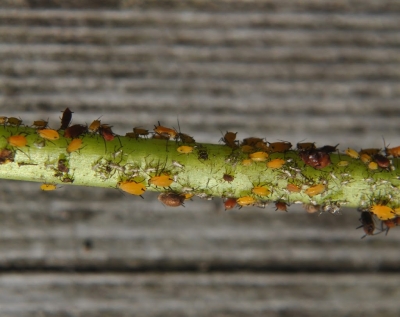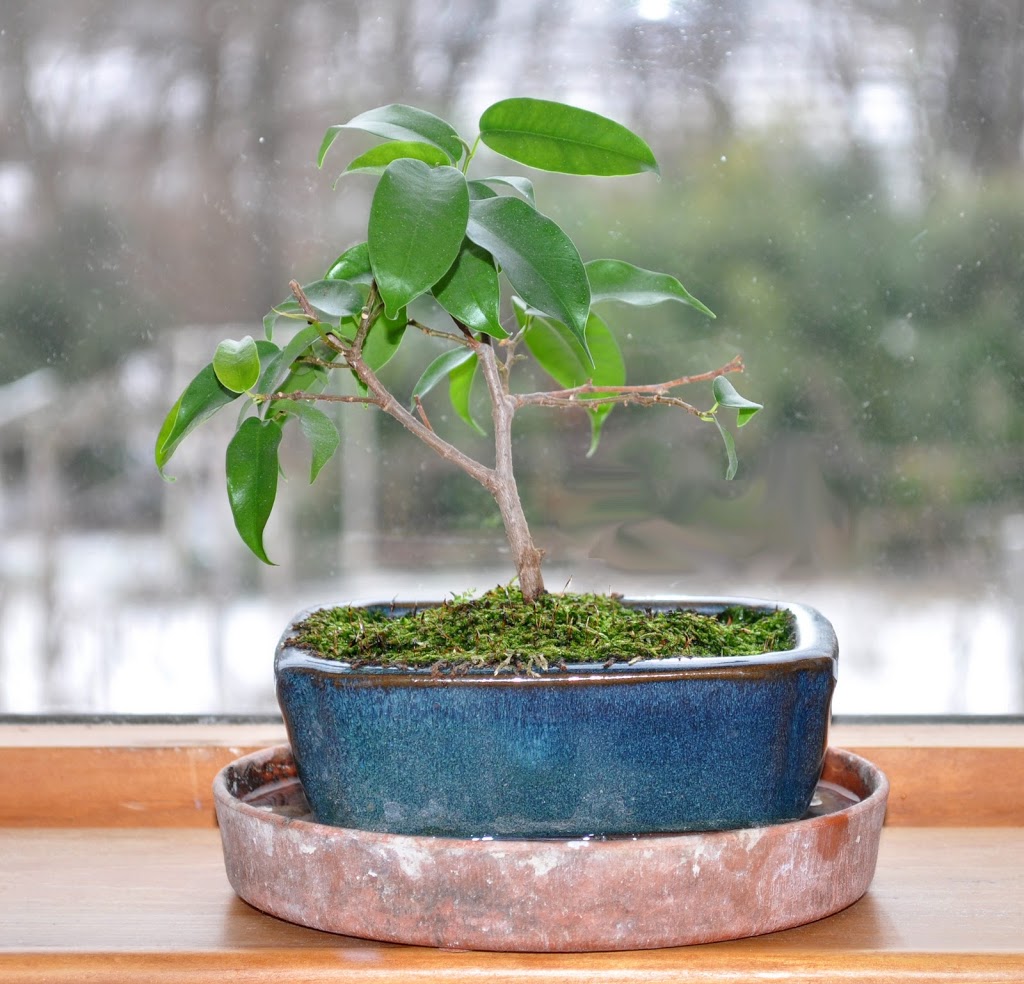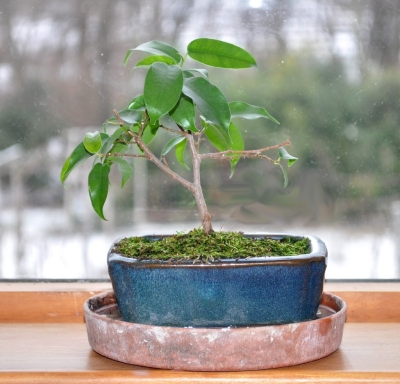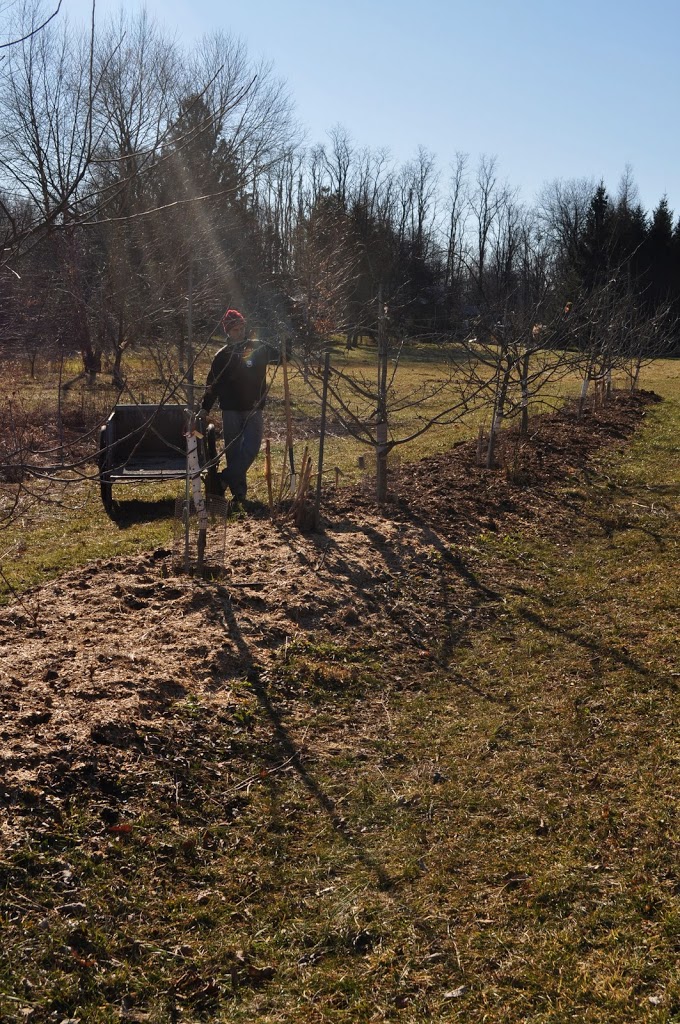WELCOMING IN SPRING & ODD HOUSEPLANT
/2 Comments/in Gardening/by Lee A. ReichThe first sign that spring is around the corner — well, perhaps around the block — is the aphids clustering on lettuce leaves in the greenhouse. For organically-grown lettuce, eradication of these pests isn’t reasonably feasible or probably even possible. So I try to strike a balance: As long as aphid populations don’t get too high, plants suffer but little. It’s also a balance between my tolerance for having to wash lettuce leaves to rid them of aphids and the number of aphids I would tolerate eating. (They’re really not that noticeable or bad to eat; sort of tasty, in fact.)
You know those ladybugs that appear on the insides of south-facing windows this time of year? They used to be my first line of defense against aphids. I would vacuum them up with my Dustbuster, which made the ladybugs dizzy but otherwise caused little harm, and then sprinkle the stunned bugs around the greenhouse in late afternoon or early evening. Next morning, as temperatures warmed in the greenhouse, the ladybugs would go to work like little tractors, methodically crawling up and down leaves gobbling up aphids.
The problem is that the ladybugs can’t get past the new windows I installed a year ago in my house. But no need to resort to pesticides.
A blast of water from the hose in the greenhouse is sufficient to knock many aphids off the leaves. It’s important to get both sides of the leaves. And it is important to keep up with burgeoning populations. Aphids are amazingly fecund, under ideal conditions their populations doubling every couple of days. They reproduce by mating, like most other animals, and also by parthenocarpy, that is, without mating. Sometimes they lay eggs and sometimes they give birth to live young. I’ll also keep an eye on other greenery in the greenhouse because a single aphid species can attack many different host plants.
Natural controls, including other insects, rain, and cold, help keep aphid problems in check. But natural controls are not as effective in the greenhouse as outdoors, where I rarely encounter aphid problems worth bothering about. So I’ll be regularly blasting the greenhouse plants with water in the coming months. And, no doubt, eating some aphids.
————————————————
 Staghorn fern is among my weirdest houseplants, especially as it grows larger and larger. About 1990, I bought the plant, a cute little thing in a 3 inch flowerpot. I also bought a softball-sized chunk of tree fern fibre on which to grow this normally epiphytic plants. The plant went into a hole gouged into the fibre, then was held in place with wrappings of fishing line. An eyebolt screwed into the fibre offered a convenient way to hang the plant.
Staghorn fern is among my weirdest houseplants, especially as it grows larger and larger. About 1990, I bought the plant, a cute little thing in a 3 inch flowerpot. I also bought a softball-sized chunk of tree fern fibre on which to grow this normally epiphytic plants. The plant went into a hole gouged into the fibre, then was held in place with wrappings of fishing line. An eyebolt screwed into the fibre offered a convenient way to hang the plant.Staghorn fern grows two kinds of fronds. The fertile fronds are green and are the ones that resemble stag horns in shape. Infertile fronds are tan and hug the soil, tree fern fibre, or — the usual support for an epiphyte — organic duff accumulated in the crotch of a tree.
Over the course of the 20 some odd years the plant has called that fibre block home, it’s grown many fertile and infertile fronds. The infertile fronds have totally enveloped the fibre block to hide it, and the fertile fronds now appear at various places around the tawny mass.
Most growth is in summer, when seedlings of other plants, including cedar trees and other kinds of ferns, sometimes take root in the moist mass. In winter, when the plant is indoors and hardly ever watered, these interlopers usually die off. The staghorn fern tolerates some drying out in winter, which is a good thing because watering it entails putting it in the bathtub and then giving it a shower long enough to let the water penetrate through all the layers of sterile fronds to wet the tree fern fibre. I let the plant set a couple of hours to let excess water drain away, then return it, now weighing about 10 pounds, to its east-facing window.
The wild fern interloper that established itself in some crevice in the sterile staghorn ferns last summer seems to be thriving along with the staghorn fern this winter, which should make for an even more interesting hanging plant in years to come.
—————————————————–
Today is a big day, the first seed sowing of the 2012 gardening season. Lettuce and onions. The lettuce for the greenhouse. The onions for eventual transplanting outdoors.
Some of the lettuce seeds will go right into the ground in the greenhouse and some of the seeds will be sown in seed flats for later transplanting in the greenhouse. The seeds sprout sooner in seed flats but the plants are more resilient, less apt to dry out or go to seed, when started right in the ground.
The plan is for these new lettuce plants to come into their own just as the last of last autumn’s lettuce plantings are harvested.
BONSAI GOOD, JASMINE BAD
/0 Comments/in Gardening/by Lee A. ReichAt almost a year old, my bonsai is looking, if not wizened, at least tree-like and a welcome sight in winter. This bonsai began life in a big box store, a weeping fig in a 4 inch pot. Weeping figs are so easy to root from cuttings that the propagators of these plants evidently don’t even bother with individual cuttings, instead just sticking clumps of them together. Or maybe they’re sold in clumps to make the plants look bushier. At any rate, I divided the clump as soon as I got home and then had 4 weeping figs.
In the tropics, I’ve seen weeping figs as large as our sugar maples. In large pots indoors, I’ve seen — and once had — weeping figs 6 feet high. I planned for one of my new weeping figs to call home a rectangular pot 1 inch deep by 6 by 4 inches long and wide — for its whole life! Another of the weeping figs was destined for a round pot just a bit over 2 inches wide and deep, also for life.
To fit these small plants into even smaller pots, each got its roots and tops clipped back, the roots for a good fit into its future pot and the tops to balance root loss and to give the “tree” an attractive form. All this began last summer, and the plants spent a few weeks in light shade to recover from the butchering.
Once recovered, the plants began to grow, which is good and bad. Growth is needed to keep any plant alive but the goal was, and is, to keep the plants small and in proportion to the dimensions of their pots, all the time maintaining good form, of course. One way to keep a plant small is to periodically cut back shoots. Another way to keep a plant small is to periodically cut off its leaves. As I wrote in my book, The Pruning Book, “Timed correctly . . . leaf pruning forces a second flush of leaves that are smaller and hence better proportioned to the size of the plant.”
I also wrote that “leaf pruning is not for every bonsai. Do not do it to evergreens . . .” Weeping fig is evergreen. Oh well, I’m going to try it anyway.
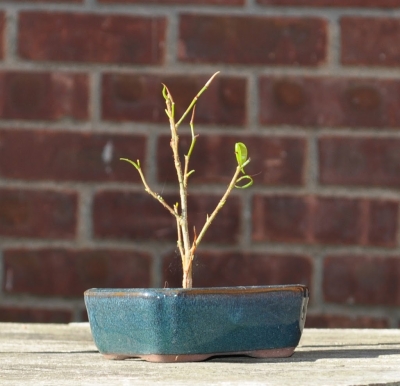 |
| This is the bonsai last summer, after I snipped off all its leaves. |
As the plants age and their trunks thicken, I’ll help them along on their way to wizened gnarliness, creating dead stubs, gouging out wood where branches are removed, and, if necessary, using temporary wires to direct branches.
Plants need to be healthy to tolerate such treatments. In a few weeks, and every late winter or spring thereafter, I’ll tip the plants out of their pots, cut back some roots, and then snuggle the roots back into the pot refreshed with new potting soil. Branches also will get pruned at least yearly for health and beauty.
I hope these trees thrive not only for my viewing pleasure but also because I devoted a whole chapter to bonsai in The Pruning Book. (This book also covers other special pruning techniques, such as espalier and pollarding, as well as standard pruning techniques for all kinds of plants.)
————————————————————–
It doesn’t seem premature to state that I’ve failed again: Three jasmine plants are, once again, all leaf and no flowers. Jasmine (Jasminium polyanthum) is a plant that is easy to grow and easy to propagate; hence all the greenery and the number of plants I’ve had over the years.
The main reason to grow jasmine, though, is for the sweet perfume with which it fills the air when in bloom. At least I think it’s a sweet perfume because I can hardly remember the aroma. I got the original plant 11 years ago and remember how proud I was getting it to rebloom for the first couple of winters.
So what makes your typical tropical or subtropical winter blooming plants — Christmas cactii, poinsettias, amaryllises, and the like — bloom when they do, or at all? A period of cool temperatures, short days (long nights, actually), or dryish conditions. Any or all of these changes for a period of time in autumn triggers flower buds for winter.
My three jasmine plants have received the requisite treatments yet, as I stare at the plants, I see no hint of a flower. Just lanky stems grabbing at other plants or sprawling on the floor.
A friend suggested that my jasmines have grown old. They did all originate as cuttings from my original plant of 11 years ago. It’s not a good explanation but the only one left. I’m buying a new plant.
———————————————————–
No, I’ve decided not to buy a new jasmine plant. I’ll give my plants one more chance (as I have every year for the past 9 years). White Flower Farm nursery, which has sold jasmines for years, offers some more exacting instructions on growing the plants: “Prune as necessary to control size or to maintain shape, but stop pruning by August 1, because the plant sets flower buds in late summer. To encourage the formation of flower buds for next winter, be sure your plant experiences the cooler temperatures and shorter days of early autumn. The plant needs 4-5 weeks of nighttime temperatures between 40° and 50°F, plenty of sunlight, and the complete absence of artificial light after sundown. Bring the plant indoors before frost. Then give it cool temperatures [below 65°] and indirect [but bright] light until it blooms again in late winter.” I will follow these instructions to the letter. Wish me luck.
——————————————————–
Last post I mentioned battling scale insects on house plants with sprays of horticultural oil in autumn. A reader wrote to offer another remedy: soap sprays. I’ve also used soap at various times, and it is effective, especially specially formulated “insecticidal soaps.” You do have to be a little careful because some soaps at some concentrations can damage some plants. (That’s a lot of “somes.”) The reader mentioned the especially environmentally friendly tack of saving shower water in a bucket, which, the reader wrote, results in a perfect soap concentration for insect control. Whatever works.
KEEPING MULCH SIMPLE
/9 Comments/in Gardening/by Lee A. Reich
Dryish and cold, but not frigid, weather: What else is there to do outdoors, gardenwise, but mulch? (Pruning is best left until after the coldest nights of winter have passed, in late February.) Arborists dumped a large pile of wood chips near my neighbor’s garden and he spread all he could in paths and among berry bushes. What’s left is for me.
Not that I hadn’t myself been spreading mulches all through autumn. Compost went on the vegetable beds, wood chips from my own pile (long gone) beneath my berry bushes and around trees, and horse manure mixed with wood shavings beneath the young row of dwarf apple trees.
Mulch is one of those things in life that you can’t have too much of — if you’re a gardener — so I forked the neighbor’s wood chips into my garden cart and hauled five loads over to my apple trees. The apples would be thankful because, as dwarf trees, they need the best possible soil conditions to keep them growing vigorously, vigorously for dwarfs, that is. Also, manure left on top of the ground in winter, especially manure left exposed to the elements, loses some its goodness as its nitrogen evaporates into thin air. Barring snow, not in the offing as of this writing, the wood chips blanket should minimize that loss.
One other benefit of wood chips are that they look nice. They are dark brown, similar to dirt. Unfortunately, the five cart loads was enough to cover only half of the 150 foot row of apples.
————————————–
I like to get on top of any gardening fad as it comes down the pike, although not necessarily to embrace it. One such fad concerns wood chips, not any old wood chips, but “ramial wood chips,” defined as wood chips made from wood no larger than about 3 inches in diameter.
Is there anything magical about ramial wood chips? These chips are surely better than the chunks of bark or wood mulch, some of it dyed red, sold in plastic bags. Ramial wood chips are cheaper, often free and, having smaller pieces, are more biologically active and better at smothering weeds and maintaining soil moisture than chunks. As compared with local, arborists’ chips that would include chips from from larger diameter wood, ramial wood chips, with their higher proportion of bark and living tissue, would be higher in nutrients.
Still, no reason to snub your nose at any and all wood chips (except for those bagged chunks). When used as mulch, a dynamic interface of decomposition develops where the bottom layer of raw chips meets the top layer of decomposed material. Nutrients are concentrated as microbes gobble up the materials and carbon, hydrogen, and oxygen are breathed away as carbon dioxide and water, so the nutritional advantage of ramial wood chips over run-of-the-mill arborists’ chips is lost.
Some people tout ramial wood chips as promoting beneficial fungi in soils, allegedly to the liking of trees — such as apples — naturally found in forests. But when any old kind of wood chips — any organic materials, for that matter — is laid atop the ground, it is worked upon by a naturally orchestrated sequence of microorganisms, fungi included. Yes, fungi are promoted, but so are bacteria and other organisms, standing ready to gobble up the more readily accessible foodstuffs after fungi have finished with them. No need to use special kinds of woods chips for special effect.
So, enough about ramial wood chips! Wood chips of every stripe are available free or cheap as a waste product. They’re all beneficial. I use any and all that are offered, and that’s what went on the ground beneath my apple trees.
To quote Thoreau: “Simplify, simplify.”


